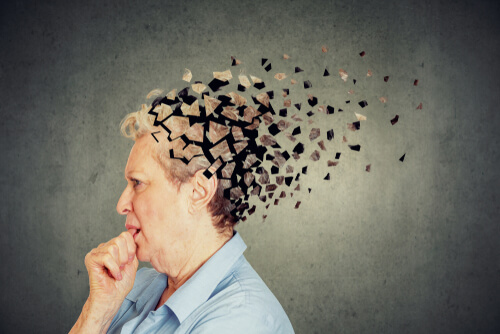
Page contents
Types of dementia
There are many different types and forms of dementia which affect different parts of the brain, cause different symptoms and appear at different stages of life.
Some are common and some are rarer. All significantly impact the lives of those who are diagnosed and their families.
Below you will find lists of the most common forms of dementia, as well as some of the rarer types. Further down the page, each common type is explained in more detail.
Common types of dementia
Here are the most common types of dementia, with Alzheimer’s being the most common:
- Alzheimer’s disease
- Vascular dementia
- Lewy body dementia
- Frontotemporal dementia
- Young-onset dementia
- Mixed dementia
- Alcohol related brain damage
- Huntington’s disease
Rare types of dementia
Around 5 per cent of people living with dementia in the UK have a rare type of dementia. These types of dementia may start in different parts of the brain compared to the more common forms, causing different symptoms.
Rare types of dementia include:
- Creutzfeldt-Jakob disease
- Atypical Alzheimer’s disease
- Pick’s disease
- Corticobasal syndrome
- CADASIL
- HIV-associated neurocognitive disorder
- Normal pressure hydrocephalus
- Progressive supranuclear palsy
Alzheimer’s disease
Alzheimer’s disease accounts for around 60 per cent of dementia diagnoses in the UK. It is the most common form of dementia. Alzheimer’s disease mainly appears in people over the age of 65. About 70 per cent of people with dementia in this age group have Alzheimer’s.
During the early stages, most people can often continue to live their lives as normal. During the later stages it impairs their ability to function, talk and walk due to cognitive decline, such as memory loss.
Vascular dementia
Vascular dementia is the second most common form of dementia. It affects around 20 per cent of people living with dementia. In the UK, around 150,000 people live with the disease.
The disease is an umbrella term for a number of conditions that are caused by decreased blood flow to the brain, preventing the brain cells from receiving the amount of oxygen and nutrients they need to function well.
Lewy body dementia
Lewy body dementia is closely related to Alzheimer’s disease and Parkinson’s disease. It is thought to affect 10 to 15 per cent of people diagnosed with dementia.
The complex disease can particularly affect people’s thinking and movement. Lewy body dementia can cause hallucinations as well as problems with alertness and concentration.
There are two subtypes of Lewy body dementia. These are dementia with Lewy bodies and Parkinson’s disease dementia. When cognitive symptoms appear before or at the same time as difficulties with movement, it is dementia with Lewy bodies. When symptoms appear in the opposite order, it is known as Parkinson’s disease dementia.
Frontotemporal dementia
Frontotemporal dementia is a term that covers several different types of dementia which occur in the frontal or temporal lobe of the brain. It is the second most commonly diagnosed form of dementia in people under the age of 65.
It occurs when nerve cells and pathways in the frontal and temporal lobes of the brain die. This causes damage to the parts of the brain that manage movement, speech, emotion, behaviour, memory, recognition and more.
Young-onset dementia
Young-onset dementia means that a person under the age of 65 has been diagnosed with dementia. It can sometimes be referred to as early-onset dementia or working-age dementia. There are around 42,000 people with the condition in the UK.
Dementia is mostly associated with older people but can also occur during other stages of life. Younger people are more likely to have a rare form of dementia compared to older people. They are also more likely to develop a familial form of dementia.
Mixed dementia
People with mixed dementia have a combination of different types of dementia and experience symptoms from these types. The most common mix is Alzheimer’s disease and vascular dementia, caused by old age, high blood pressure and damage to the brain’s blood vessels.
Alcohol related brain damage
Alcohol related brain damage is a disorder caused by excessive drinking over a long period of time. The combination of the toxic effects of alcohol paired with a lack of Vitamin B1 (thiamine) can cause alcohol related brain damage.
Alcohol prevents the body from effectively absorbing Vitamin B1. This causes a deficiency which can damage memory, vision and cause delirium.
Regularly drinking excessively can lead to three main types of brain damage:
- Wernicke’s encephalopathy
- Korsakoff’s syndrome
- Alcoholic dementia
Huntington’s disease
Huntington’s is an inherited genetic disorder that is mostly associated with motor function but can lead to dementia. Caused by a defective gene on chromosome 4, the disease slowly progresses over time. This results in a decline in movement, memory, thinking and emotions.
The first signs and symptoms are usually spotted in people between the ages of 30 to 50. However they can appear in younger people and children as well. Symptoms can include severe depression, apathy, obsessive and compulsive behaviours and the misuse of alcohol or drugs.
Further advice on dementia
There is no cure for dementia. Receiving a diagnosis yourself or being there to support a loved one can be extremely challenging. It is important to remember that you are not alone and that there is support available.
It can be difficult to spot the early signs and symptoms of dementia. Getting an early diagnosis ensures you or your loved one can get the help and support you need sooner. It will also allow you to plan for the future.
For advice on how to care for a loved one with dementia and plan for the future, please see Caring for someone with dementia: How to cope and When should someone with dementia move into a care home?
Find your ideal care home
- Explore a wide range of care options and facilities
- Read independent ratings and reviews
- Connect directly with care homes to book a tour and discuss your needs


